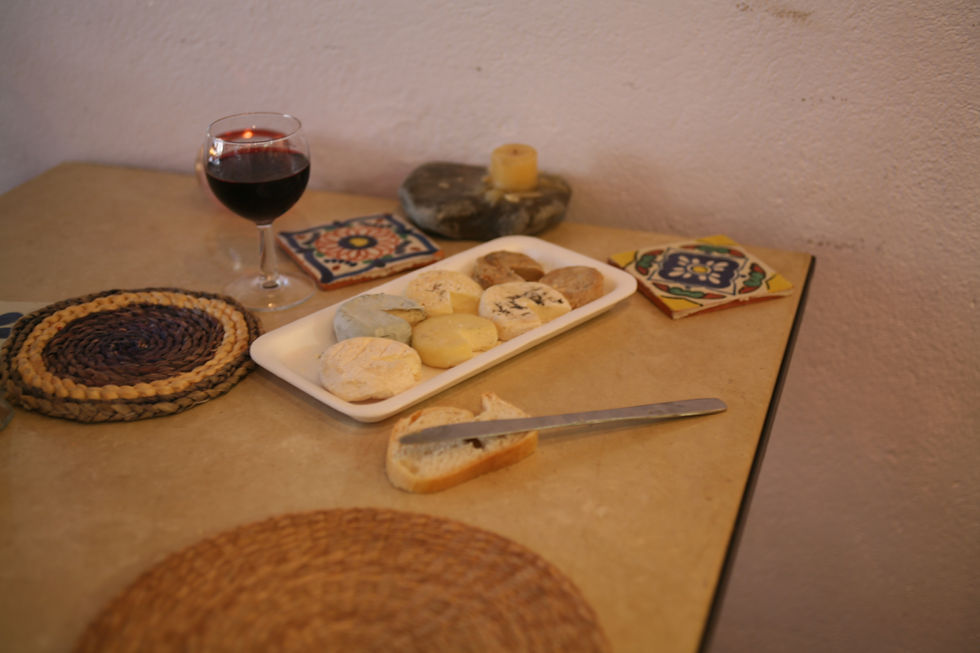(30) Beaufort, a small village high in the Alps, a beautiful and delicious cheese.
- C Demeyer
- Mar 5, 2022
- 3 min read
I went to the east of France some years ago and found myself high in the alps in the middle of a beautiful small village. The area was scenic, the air was pure, the mountains marvellous, and the day was old but there was a buzz in the air, the cheese producers made it all alive with their industry and the smell was wondrous.
A bit further down the road, or maybe slightly higher, and I found myself watching the sunset with the cows being milked by the portable machines. I was not far from the large city of Albertville, but it felt like I was in a different country, almost a different universe.

The beautiful village of Beaufort
So, I propose to give you some information about this cheese, in the same format as before.
History
In the Middle Ages monks started to make cheese in the Savoie area and progressively went to the high pastures more and more, and it was in the sixteenth century that cows started to be used with a system that is consistent with the one used today: depending on the weather and time of the year, the land will be used for pasture and agriculture with animal tending where they are. Milking is done where the cows are on the slopes of the mountains and this leaves the bottom of the valleys for profitable growing. Through time some chalets have been built where cheese is made, and the slopes are well known to skiers.
Production area
The production area is the east side of the Savoie department, 110 communes, with the three valleys of: Beaufort, Maurienne, and Tarentaise, and with a part of Val d’Arly in the Haute-Savoie department, 2 communes. This is Alpine territory, high mountains with deep valleys and high pastures available only part of the year with a harsh climate and harsh conditions; however, the more difficult it is, the better the result, with rare flowers growing on the high pastures which are numerous and abundant; rainfall is sufficient with a rich soil.
Production method
For chalet d’alpage production (cap) the milk has to be treated as soon as possible, the rennet is used on warm raw milk (32 to 35oc) in copper vat and the curd mass is cut into small grains with the mix heated between 53 and 56oc and continuously stirred. When ready, the curd grains are assembled into a cheesecloth and put into the Beaufort mould with a concave heel where it is pressed for a minimum of 15 hours and during which it is turned; a blue casein mark will be applied to the side of the cheese, it is elliptical and bear the name France, Beaufort, an identification number of the producer site, and the month and year of production in number, its distribution is overseen by the professional organization which can withheld it in case of non-conformity. It then rests in a cool drying room and then is put into a bath of brine (9 to 12oc) for 20 to 24 hours and goes back to the drying room afterwards before transfer to the maturing cellar (6 to 12oc) where it will stay on spruce wood boards for a minimum of 5 months and periodic brushing with “morge”, basically a mix of old rind pieces and brine which helps to bring microbial balance to the rind, but could be helped by brushing with coarse salt first. Once the rind has been formed, usually during the first three weeks, it is brushed once a week at least.
“Été” production is for products made between June and October, inclusive, and with or not Alpine pasture milk.
“Chalet d’alpage” denotes a product made between June and October, inclusive, done in a traditional way twice a day in a chalet d’alpage above 1500 metres and using only the milk of one herd, this will bear a red casein mark as well as the original blue casein mark applied to all Beaufort cheese wheel.
Look, feel, and taste
Pale on the eye, this hard cheese is firm but delicate with a creamy feel and fruity smell, the second taste is more rewarding with flowery notes, touch of hazelnut, and a hint of grass, delicate flavours depending on production and time of the year.
Safe keeping
To be consumed within the week when cut, wrap in cheese paper or cling film and keep in refrigerator.
Statistics
400000ha production area in 2005, 28 farms 14 cooperatives and 3 industrial producers, 47 affineurs, 4150 tonnes (2005), 4320t (2006), 4512t (2009), 5340t (2016), 5100t (2017), 5350t (2018), 5160t (2019).
And remember, give life to your taste buds, and above all, enjoy real cheese.



Comments